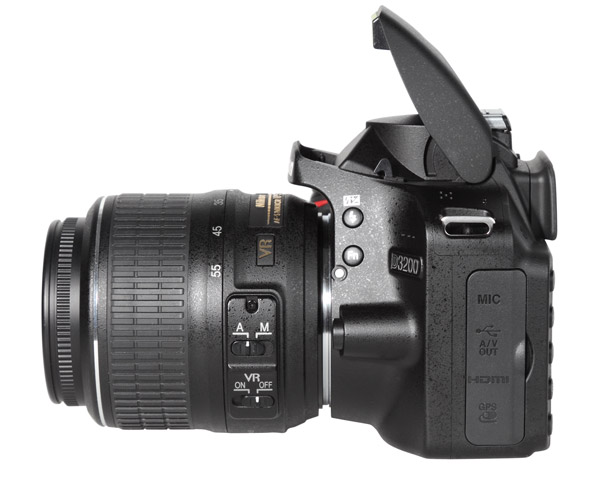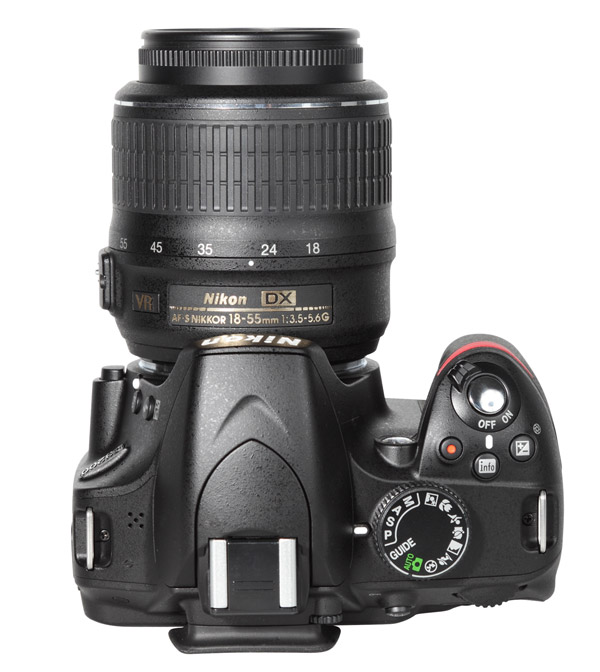Nikon D3200 DSLR Review
The D3200 is Nikon’s new entry level SLR with an outstanding nominal resolution of 24MP. The camera uses an APS-C sized CMOS sensor 23.2 x 15.4mm in size, Nikon’s DX format.

The camera offers a lot of help to beginners; just like the forerunner D3100, the D3200 offers a special “Guide” mode. When using this mode and starting the D3200, it will ask the user whether he or she wants to shoot, to review or to setup the camera menu. If the choice is to shoot the camera“asks” whether the user is an absolute beginner and needs “easy operation” or an advanced user who wants “advanced operation.” If an absolute beginner, the D3200 presents short descriptions of some typical photographic situations and sets up all parameters accroding to how the photographer responds.

For example: If the photographer chooses the guide mode “sleeping faces” the camera uses higher ISO speed settings, deactivates the flash system, suppresses the AF light and reduces the shutter sound.

The “advanced” guide version will show tips & tricks for better images. For example: If the photographer chooses the “soften backgrounds” tip for portrait shots the camera automatically activates the aperture priority mode and advises the photographer to use the setup dial to change the iris size and to use apertures with smaller numbers to avoid depth of field.

The camera has a very compact design. It rests well balanced in the photographer’s hands and offers numerous function buttons to change parameters very quickly. The five buttons located left of the LCD will activate a zoom into images or to open the setup menu. Just like nearly all entry level SLRs, the D3200 offers only one setup dial on the back to change aperture size and shutter speed settings.

The LCD screen is very large (3 inches) and has a highresolution (921,000 RGB dots.) It is fixed to the camera back and can’t be swiveled.
The camera has a very fast AF system with 11 AF-sensors. The camera offers advanced video functions. It records Full HD video with up to 30 frames per second (25 frames per second in PAL setting). It offers manual change of iris and shutter speed in video mode and allowsthe user to set up the sound recording level manually, which is an outstanding feature for an entry level VD-SLR.
Comments on Image Quality
Color: The D3200 uses a precise automatic whitebalance system. This system helped the Nikon to reproduce the test chart in a natural looking way with only a slight tendency towards cooler colors. Only the brightest gray patterns of the chart shows a slight shift into the yellow direction. The overall saturation is a little high but still acceptable for an entry level camera. Color errors are on low level, only blue nuances show aheavy boost into darker nuances or colors with higher magenta rate. Skin tones are very fine but show a very slight shift into the yellow direction.

Sharpness: The camera showed good performance in the resolution tests. With 3352 of 4000 lines in picture height it gained an extremely good result for an entry level camera. The portrait shot shows that fine details like the hairs and the fabric structure of the t-shirt. All are reproduced quit naturally and without any artifacts (halos) of a very intense sharpness filtering. Due to this missing “over filtering” the images have a slightly softer look than images taken with Canon DSLRs, for example.

Noise: Even though the Nikon D3200 uses a sensor with extreme high pixel density it shows veryclean and nearly noise free images. Between ISO 100 and 400 the luminance noise is only a little higher than in images taken with other APS-C sized sensors. Color noise isn’t visible in images taken with ISO 100 to ISO 6400, which is remarkable and a result of an intelligent anti-noise filtering by the Expeed 3 image processor system. In higher ISO speed settings the color noise artifacts look like standard film grain, but it is very discreet.

The dynamic range results are on a high level: The camera gained a maximum of 10.9 f-stops at ISO 100 and keeps the very high level of more than 10 f-stops in images taken with ISO 200 to ISO 800.
Pro:
* Affordable camera with 24MP resolution
* A “Guide” system that will help beginners
* Numerous scene modes and digital filter effects
* Easy handling, light body, high resolution LCD screen
* Full HD video with 24, 25 and 30 frames per second
* Manual sound level control when recording video
Con:
* Missing swivel monitor
Lab test and results by Betternet, our TIPA affiliated testing lab, edited by George Schaub.
- Log in or register to post comments

















































